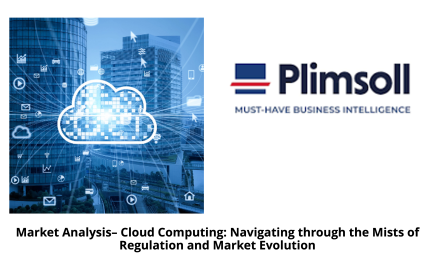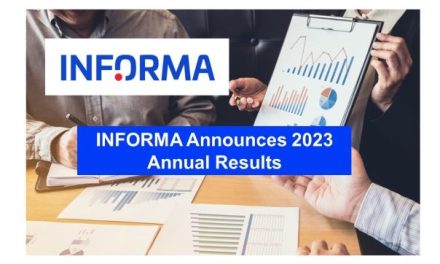BIIA has recently come across an article “Focus on Value: What Your Company Does Matters more than Where It Sits” Part I, which we posted on the BIIA website. In this thought inspiring article the co-authors (both from Accenture) raised the issue about the validity of current market boundaries, or industry definitions.
In their preamble the authors rightfully pointed out: “….for decades, industry definitions have been used to both group certain companies and business activities together as well as to serve as the starting point for growth and operational business strategies.
In a pre-digital world, that thinking made a lot of sense.
Today, however, traditional industry boundaries are often blurred as companies jostle with convergence and consolidation. Strategy development in this boundaryless environment requires a new perspective. Companies need to think first about what they are famous for, and from which capabilities and services their business, employees and customers derive value, rather than their historical industry affiliation.”
The opportunity and the role of a lifetime
The authors provided some examples of how leading companies are now focusing on the roles they should play in creating customer solutions within their own industry and across new industries. They even see the blurring of industry boundaries as an opportunity of a lifetime. For the past 20 years of having had an ‘outside looking in view’ of our industry, I fully agree with this assessment.
Let me start by saying that finding new sources for value creation both inside and outside traditional industry boundaries should be part of an ongoing strategic review process. That of course is easier said than done. It takes a lot of vision gleaned by working on the ‘customer front’. However, in many cases when such a process is called for, it is almost too late after disruptors have entered the fray.
Profits Tell the Tale:
The suggestion was raised that winners in the new game of customer centricity are leading the pack in profitability. Yes, winners take it all and can be highly profitable. In our industry market leaders produce incredibly high profit margins, but there are others who have a strategic intent to plough all surpluses into growth. Traditional credit information providers are no longer growing and disruptors are benefiting from double digit growth. The newcomers generally go for growth at the expense of showing profits. There are numerous examples in our industry.
Amazon is a unique example of a company that needs to be watched. It thrives on internally generated information on suppliers and customers and may be willing to try its hand in sharing it with others. Amazon’s motto seems to be ‘who needs to buy information’ when it can be generated internally? Amazon avoids reporting profits by using expense investments to generate growth. It pays hardly any taxes and companies who show high profitability have to shed a lot of cash to satisfy the Internal Revenue. Under such a scenario listed companies in credit reporting as compared to the newcomers could be at a disadvantage.
Perhaps the high margin earners in our industry should take a cue from Amazon and others in order to be able to grow faster.
The role of a Lifetime:
Accenture identified the five most important business archetypes and many of the examples are from the manufacturing sector. However, the concept can be applied to our industry.
Explorer: invents new materials and processes and originates breakthrough components for use in many products. In our case it would be the software industry who would invent new tools such as data management, others providing new solutions for applications in analytics and AI, or companies searching for new data sets.
Producer: manufactures existing and newly invented materials and components at low cost and scale. These would be companies who source data, create databases…
Assembler-Distributor: brings together components, adds value and then distributes a final market-ready output. In our case these are companies thriving on partnerships in bringing together data, software, analytics and customers
Personalizer: designs highly relevant customer solutions and experiences from the world of available components. Creating risk management or marketing applications for particular customer segments.
Networker: facilitates the flow of digital and material goods across the roles. For example, in the ‘identity/kyc/aml’ space we see many examples of companies helping financial services institutions to be compliant.
Seeing is Believing: In applying this new lens of seeking role-based excellence for value creation, Accenture sees four essential activities which should be looked at from a different perspective: Opportunity, Competition, Industry viewpoint, Organization and Governance.
See Opportunity Differently – in applying this new imperative for our ‘industry segments’, I see the following developments
 Credit Rating – Commercial Credit Reporting were once separate industry segments – now there is convergence.
Credit Rating – Commercial Credit Reporting were once separate industry segments – now there is convergence.
Traditional boundaries had already started to blur more than ten years ago. In the meantime, hundreds of disruptors had appeared who serve specific customer needs delivering decision support for whatever business decisions to be made, and in real time. The new world of providing decision support is still fragmented, nevertheless consolidations and a one shop approach may not be far off. Or at least that was what I thought.
The bombshell dropped on January 28, 2021 when Moody’s Analytics introduced ‘DataHub’, a risk management tool which allows credit risk managers to pick and choose to manage a variety of risks of 400 million private and public companies and on a global scope: Moody’s DataHub delivers cross-referenced datasets in a centralized area with sophisticated analytical capabilities. The platform facilitates an holistic view of risks and opportunities related to credit, real estate investments, and climate, and provides essential inputs for Know Your Customer (KYC) onboarding and compliance screening, master data management, and entity resolution.” In essence a customer oriented one stop shop for risk managers.
How did they get there? Clearly Moody’s looked at the rating business from a different angle: Decision support or risk management in a broader sense.
The rating industry still enjoys huge margins and no disruptor has yet managed to unravel the oligopoly. Nevertheless, the rating agencies have been heeding the message during the last financial crisis that regulators, in the end, have greater leverage to define their industry. Therefore, they are moving fast into unregulated activities such analytical services covering the private company risk management turf once the domain of traditional credit reporting businesses.
For example, Moody’s Analytics acquiring Bureau van Dijk and S&P Global Market Intelligence launched S&P Global RiskGauge Reports, a new Credit Analytics offering. In both cases the skill sets in rating, meaning risk management were applied in the entry into an adjacent industry segment.
CRIF made a strategic investment in we.Trade, a digital trade platform based on the Linux Foundation’s Hyperledger Fabric and runs on the IBM Blockchain Platform for 12 banks. we.Trade digital platform delivers reliability, simplicity and security to global trade transactions across trade finance, insurance and logistics. “CRIF and we.Trade will create synergies that will help companies to address their challenges making it easier and more reliable for buyers and sellers to trade globally”, commented Carlo Gherardi, Chairman of CRIF.
Refinitiv, BitSight and Creditsafe is another example of convergence of three separate industry segments: Financial Crime, KYC and AML – Cyber Security Ratings and Credit information.
Refinitiv is further expanding the scope of its data-driven due diligence reports with the addition of cybersecurity and company credit risk ratings from BitSight and Creditsafe. The data partnerships follow Refinitiv’s recent inclusion of ESG data and its acquisition of The Red Flag Group last year.
The addition of cybersecurity and credit risk ratings is in response to the myriad of legal and regulatory obligations organizations face when dealing with third parties. Suppliers, distributors, resellers and other third parties may pose significant integrity and compliance risks and these need to be managed by every company to avoid significant fines and reputational damage.
See Competitors Differently
Fintechs are using alternative data and analytics thus ignoring traditional credit information suppliers. As they grab significant lending from traditional banking, the consumption of information services will also be declining. The loss in revenue cannot be made up by tapping into Fintech as a new customer segment, because they hardly use credit histories from traditional credit information providers.
Some members of our industry were not deterred by this predicament. They made strategic minority investments in Fintech companies to learn and to be able to provide their expertise in data management and decision support.
Beware of situations when customers become competitors. Credit Insurers were once large information buyers. Today they are in risk management, generating their own performance data and help their clients with the assessment of risk. Their new profession is risk management.
See Industry Differently
Amazon was mentioned before. It never limited itself to the industry lens of online book retailing. When the printing industry could not deliver books to customers, Amazon had to return to bricks-and-mortar concept of warehousing and delivery services. Amazon sees the opportunity in owning and controlling the Networker archetype in its business.
Experian is not limiting itself by staying in its credit bureau and decision support services. It is seeking to apply its decision support expertise to other industries. The executive team at Experian sees enormous potential in both analytics and AI to amplify the impact that they have (Experian aims at the $5 trillion AI market).
See Organization and Governance Differently
Many of our larger industry member are matrixed and work in regulated environments. Partnering with such ‘institutions’ will require some adjustment. If the partnership is of significant scale, norms and industry ethics need to be managed well. In regulated environments governance and compliance will play a larger role.
There are indications that some of major industry players are seeking entry into non-regulated industries not to become hostage to regulators. Some are able to apply their expertise in other industries. Nevertheless, given the current disruptions and turmoil as a result of the pandemic, I sense that a lot of rethinking is currently underway in how to move forward and how to exploit opportunities.
Opportunity and role of a lifetime?
In light of the disruptions and changes now is the time to revisit customer needs, look at competition, be aware they have the same tools, and how efficiently are they using these tools. Has disruption in our industry and adjacent industries caused consolidation and convergence? This is the time of opportunity, perhaps once in your lifetime. It is also the time to create your company’s role of a lifetime and perhaps your own.
![]() Author: Joachim C Bartels, Managing Director and Editor-in-Chief of the Business Information Industry Association – the opinion expressed in this post are those of the author and do not necessarily reflect those of the membership.
Author: Joachim C Bartels, Managing Director and Editor-in-Chief of the Business Information Industry Association – the opinion expressed in this post are those of the author and do not necessarily reflect those of the membership.


























